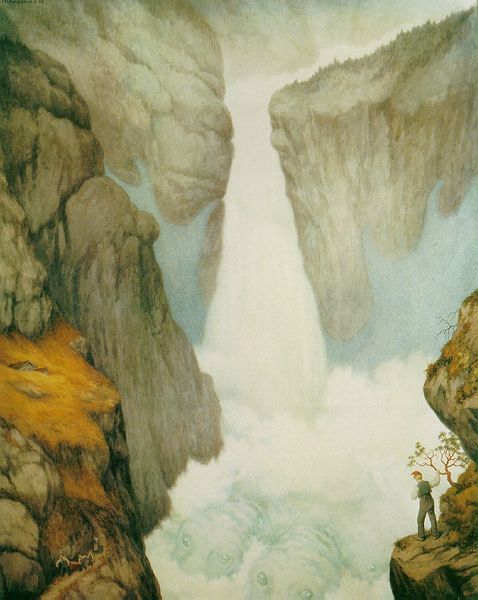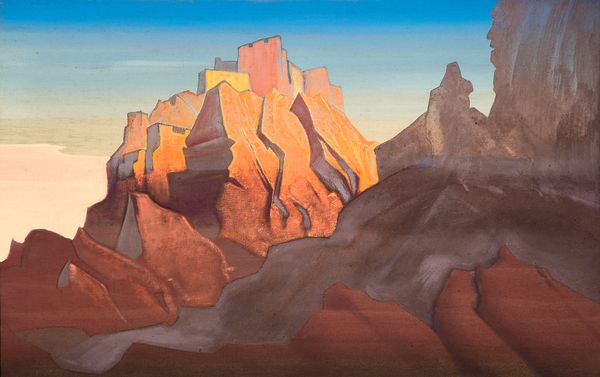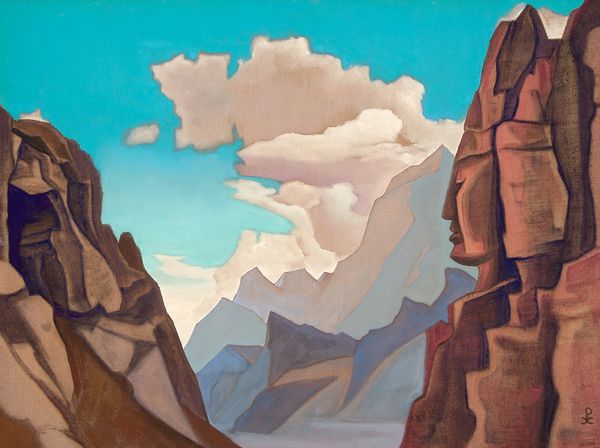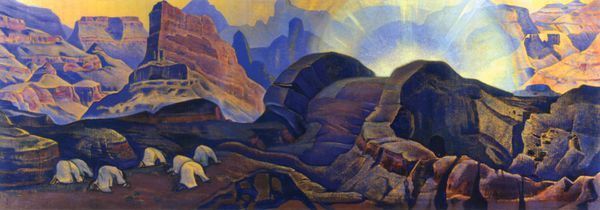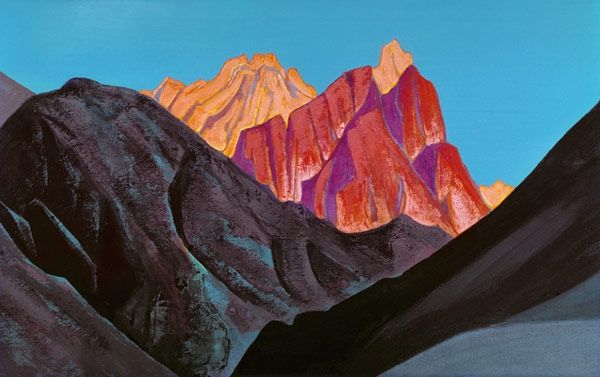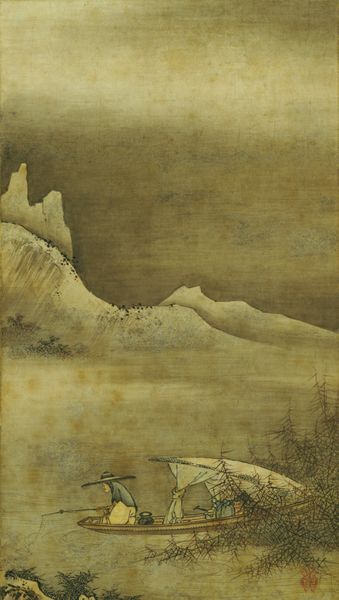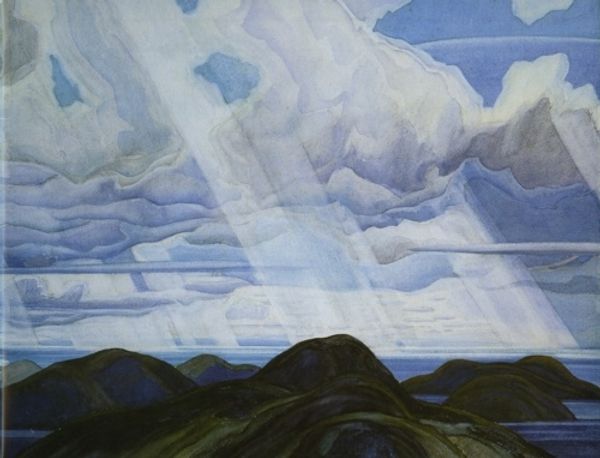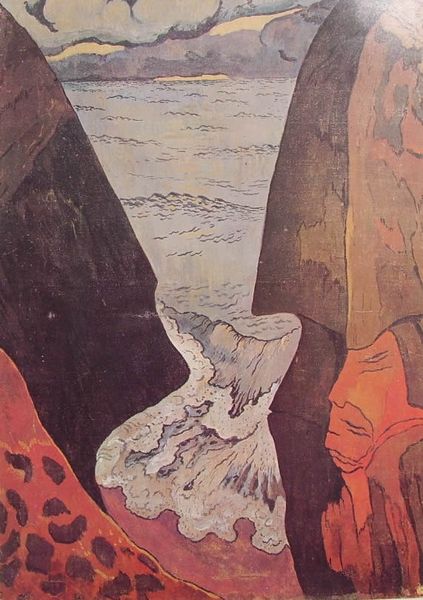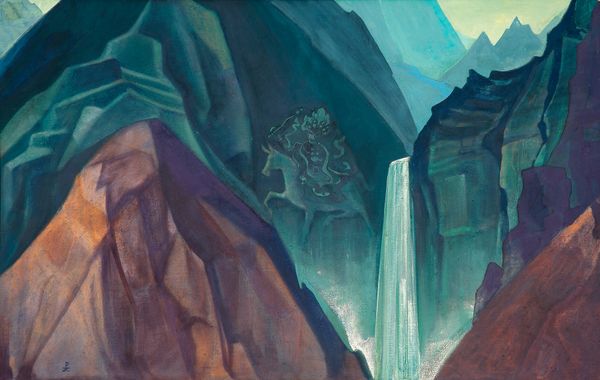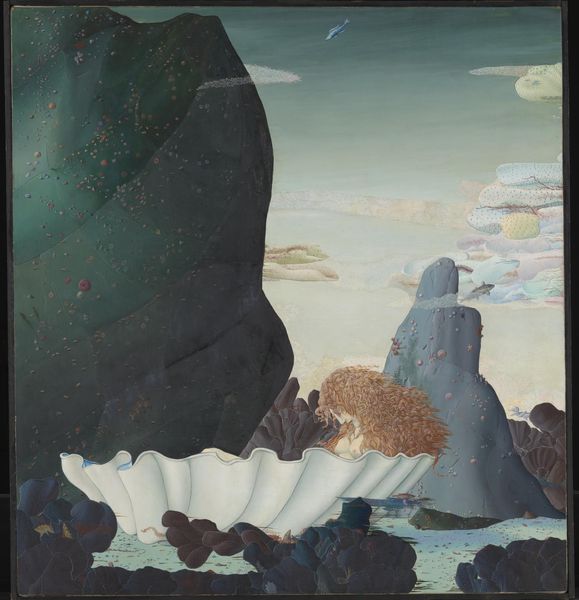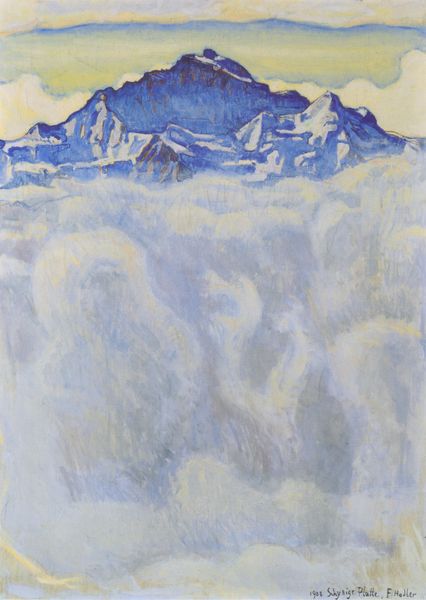
plein-air, oil-paint
#
sky
#
plein-air
#
oil-paint
#
landscape
#
impressionist landscape
#
oil painting
#
ocean
#
rock
#
mountain
#
naive art
#
symbolism
#
nature
#
sea
Dimensions: 72.1 x 74.7 cm
Copyright: Public domain
Curator: We're standing before "The Green Wave, Vorhor," an oil painting created in 1896 by Georges Lacombe. It's currently held in the collection of the Indianapolis Museum of Art. Editor: The immediate feeling is one of power, almost overwhelming. The contrast between the dark, imposing rocks and the shimmering, almost ethereal wave is quite striking. It feels as if the ocean is about to swallow everything in its path. Curator: I'm fascinated by that contrast, too. Lacombe, deeply involved in Symbolism, presents nature here not just as a landscape, but as a potent force, loaded with emotional and perhaps even spiritual meaning. His choice to paint it "en plein-air," capturing the light and atmosphere directly, amplifies this effect. Considering his association with the Nabis, we must also contemplate its place in a larger, avant-garde exploration of subjective experience. Editor: Yes, absolutely. The wave itself… the artist uses this extraordinary ochre colour, it glows, doesn't it? The white spray seems almost secondary, the support or frame for that incredible wave which takes centre stage. Does that ochre represent a kind of destructive sun, an avenging fire sent from the sky perhaps? It is like some mythical flood rather than just the sea. Curator: The symbolic density in this image speaks volumes. Consider, Lacombe was moving within circles deeply influenced by esoteric and theosophical thought. The "green wave" motif, appearing across cultures, is so often a signifier of cleansing, but also destruction, and potent female energy, drawing on ancient myths. Editor: Female energy...yes, I hadn’t thought of it quite that way but it explains the emotional power, the sheer life force bursting forth from the rocks that try to contain it. I keep seeing those rocks as patriarchal forces pushing back the inevitable rise of something ungovernable, matriarchal and connected to the ocean of feeling. Curator: Precisely. The way Lacombe frames the ocean—a glimpse through a narrow channel of rocks—almost suggests a birthing canal. The wave is born, violent and beautiful. This perspective certainly brings gender into the frame, and it's difficult to avoid noting the sociopolitical and historical context too. Remember this period: anxieties about social change, the 'New Woman,' burgeoning socialist ideas – all possibly finding resonance in this wave. Editor: It’s amazing how a seemingly simple seascape can be so dense with symbolic meaning and power. I won’t look at a wave in the same way again! Curator: Exactly! Lacombe’s piece allows us to not only appreciate the visual elements, but invites us to ponder the social and historical tides that shaped its creation.
Comments
No comments
Be the first to comment and join the conversation on the ultimate creative platform.
